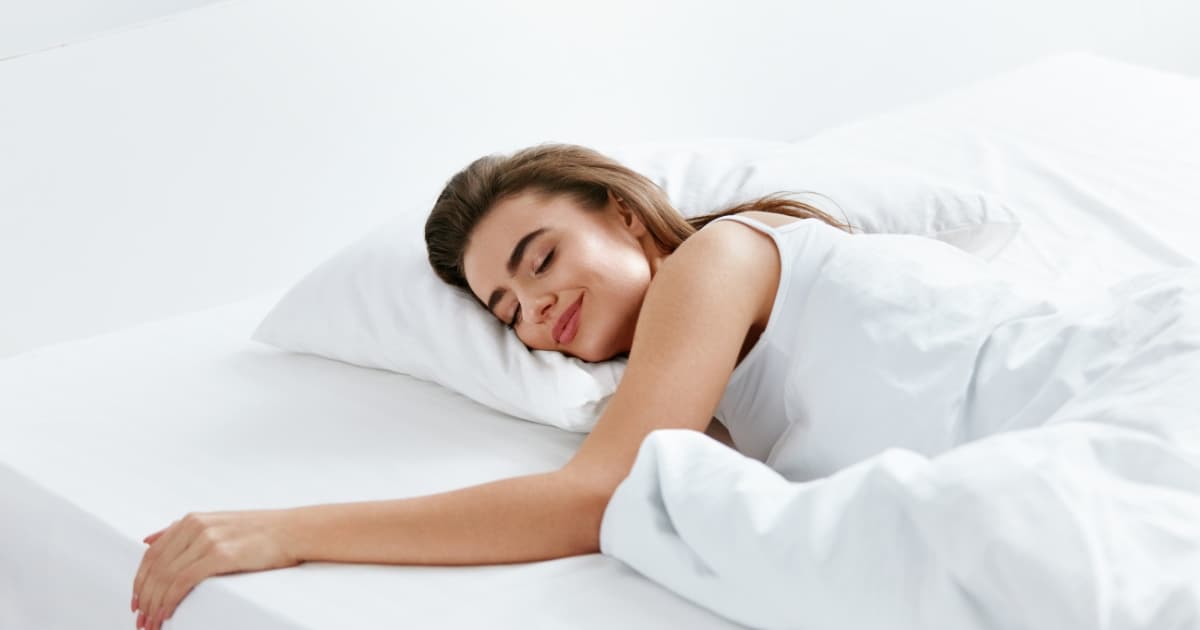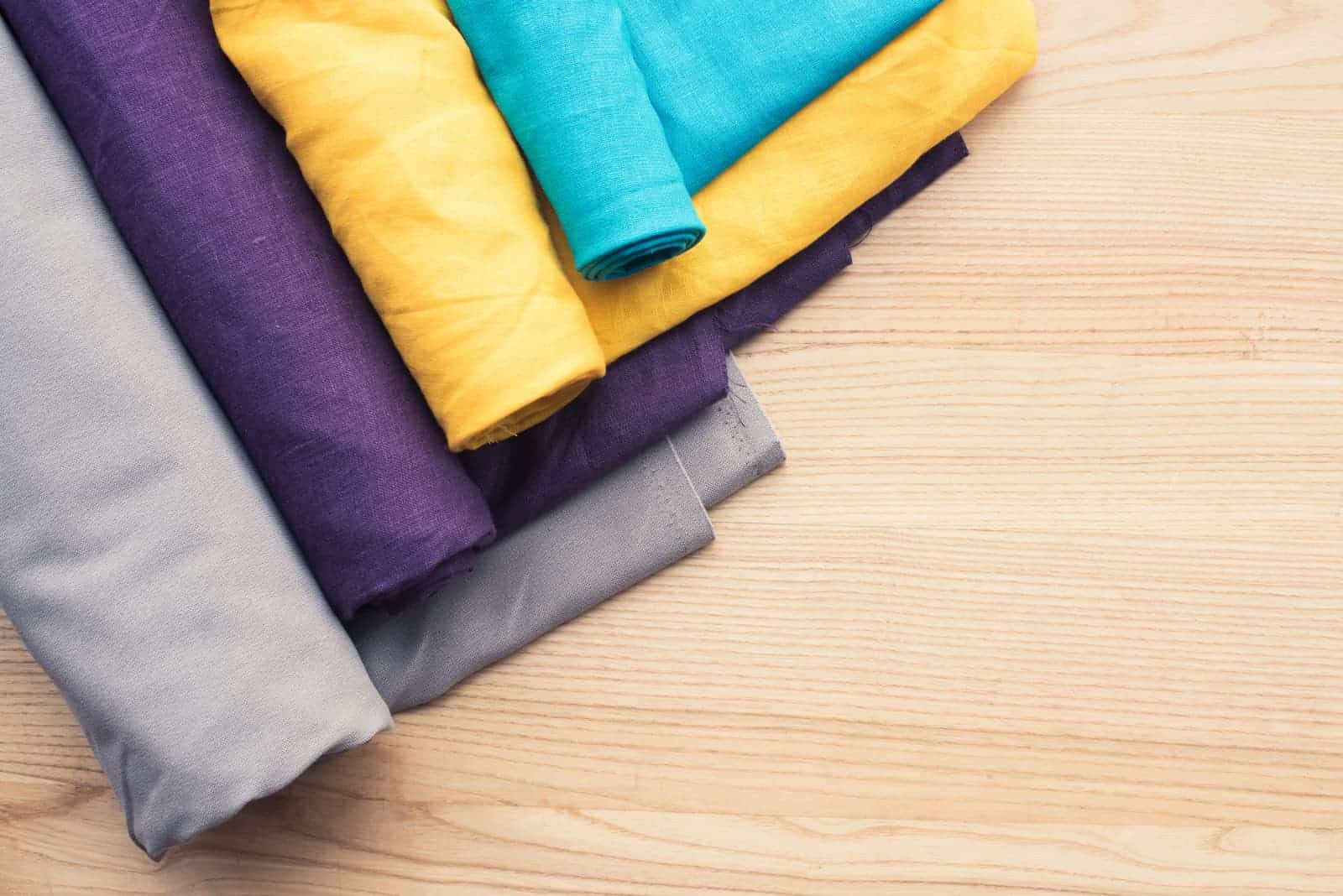Once you settle into bed in the evening, you probably don't even think about the type of bed linen you have. But did you know that the right choice of bed linen can have a significant impact on the quality of your sleep? Let's explore how to choose bed linen that is ecological, comfortable, durable, and suitable for allergy sufferers. We'll discuss the essential advantages and disadvantages of various materials, and what to watch out for.

Main Types of Bed Linen
There are several main types of bed linen that differ in the material they are made of and their properties. Among the most common materials are cotton, linen, silk, satin, microfiber, and flannel.

Cotton
Cotton is the most commonly used material for making bed linen. It is a natural material that is breathable, soft, and comfortable. Cotton bed linen has excellent moisture absorption, which is advantageous, especially for people who have sweating issues. At the same time, it is one of the most problematic materials, accounting for approximately 40% of global textile production and being grown in more than 100 countries worldwide.
Advantages of Cotton Bed Linen:
- Breathability
- Moisture absorption
- Softness and comfort
- Availability and wide selection
Disadvantages of Cotton Bed Linen:
- Can easily wrinkle.
- If you don't choose organic cotton, it is the least eco-friendly textile on the market.
If you don't choose organic cotton, you contribute to a significant ecological catastrophe
Cotton cultivation also requires the use of pesticides and chemicals that can pollute the soil, water sources, and endanger the health of farmers and the population. Toxic chemicals used in cotton production can also have long-term negative impacts on ecosystems and animals. Cotton cultivation consumes 2.5% of the world's agricultural land and is responsible for 16% of total pesticide consumption.
One of the biggest problems associated with cotton cultivation is the massive water consumption. To produce one kilogram of cotton, approximately 10,000 liters of water are needed. Cotton requires a large amount of water for growth and field irrigation. This high water consumption can lead to the depletion of water resources and increased environmental stress, especially in areas with limited water sources.
Organic cotton is much more environmentally friendly but also more expensive
If you want to get cotton bed linen, always choose organic cotton, which consumes about 91% less water. In the case of organic cotton, cotton growers do not rely on local sources of drinking or utility water, but mostly irrigate their crops with rainwater, which they then allow to be processed again in a wastewater treatment plant.
Organic cotton is grown without the use of synthetic pesticides and fertilizers, reducing the impact on the environment. Always look for the Global Organic Textile Standard (GOTS) certification, which guarantees that products meet strict ecological criteria.

Nanocotton®: Innovation for Allergies that is Eco-Friendly
In recent years, an innovative alternative to traditional cotton has emerged in the market, known as Nanocotton®. This material offers numerous advantages for both allergy sufferers and the environment, thanks to its unique structure and composition.
The outer layer of satin cotton is made from high-quality combed organic cotton, which is soft, breathable, and pleasant to the touch. Organic cotton is grown without the use of synthetic pesticides and fertilizers, reducing its environmental impact.
The nanofiber membrane inside serves the function of protecting against dust mites and their allergens. This membrane consists of thin nanofibers that create a delicate web with pores sized 100-150 nm. These pores are so small that they prevent the passage of dust mites and their feces, ensuring high-efficiency protection for allergy sufferers.
Advantages of Nano Bedding:
- Breathability.
- Moisture absorption.
- Effective protection against dust mites.
- Pleasant and luxurious appearance due to the layer of satin cotton made from 100% organic cotton.
- Sustainability and ecological friendliness ensured by the use of certified organic cotton.
- High breathability, absorbency, and adaptation to ambient temperature for comfortable sleep.
Disadvantages of Nanocotton Bedding:
- Higher acquisition costs.
- Not suitable for machine drying.
Linen Bedding
Linen is another natural material popular for bedding production. It is highly breathable and even better at moisture-wicking than cotton. Linen bedding is especially favored in summer for its extreme airiness and reduced perspiration.
Advantages of Linen Bedding:
- Breathable and excellent moisture-wicking,
- cooling in summer,
- durable.
Disadvantages of Linen Bedding:
In recent years, linen bedding has become increasingly popular due to its exceptional properties and ecological benefits. Although linen fabric has many positive impacts on the environment and advantages, there are some potential negative impacts associated with linen cultivation and linen bedding production. Below are the main disadvantages of linen bedding and several potential environmental threats:
- Higher price compared to cotton: Linen bedding tends to be significantly more expensive than conventional cotton.
- Wrinkles easily: Linen bedding is extremely prone to wrinkles, and after the first night, it may look like it hasn't been ironed.
-
Water consumption: While flax cultivation requires much less water than cotton, a certain amount of water is still needed for irrigation. However, overall, linen production is considered more sustainable in terms of water consumption.
-
Chemical substances: Various chemical substances, such as retting agents and disinfectants, are used in the processing of flax into fiber. This process can have a negative impact on the environment.
-
Energetic demand: The production of linen fabrics can be energy-intensive, especially in processing fibers into finer fabrics. However, modern technology and improvements in production processes help reduce energy consumption.
-
Monocultures: Like other crops, large-scale flax cultivation can lead to the development of monocultures, which can negatively impact biodiversity and soil health.

Silk Bedding
Silk is a luxurious material obtained from natural fibers produced by silkworms. Silk bedding is renowned for its smooth and cool surface that feels pleasant to the touch. Silk bedding is suitable for sensitive skin.
Advantages of silk bedding:
- Pleasant, smooth, and cool surface.
- Gentle on sensitive skin.
- Luxurious appearance and feel.
Disadvantages of silk bedding:
- Higher cost.
- Requires more maintenance.
- Less durable than other materials.
-
Energetically demanding production process: Silk processing is often energy-intensive, involving many manual and mechanical processes such as boiling, sericin removal, and fiber winding.
-
Chemical processing: Chemicals, such as dyes and substances to enhance fabric properties, are frequently used in the production of silk bedding, which may have a negative impact on the environment and workers' health.
Satin Bedding
Satin is not a material but a weaving technique that creates a smooth and glossy surface. Satin bedding can be made from various materials such as cotton, polyester, or silk. Satin bedding is popular for its elegant appearance and smooth feel on the skin.
Advantages of satin bedding:
- Smooth and glossy surface.
- Elegant appearance.
- Variety of materials.
Disadvantages of satin bedding:
- Less breathable than other materials.
- Prone to wrinkling.
Microfiber Bedding
Microfiber is a synthetic material often used for bedding production, but it is more suitable for making mattress protectors rather than the bedding itself. While it is very fine and lightweight, it is not highly breathable.
Advantages of microfiber bedding:
- Softness and lightness.
- Resistant to allergens.
- Easy maintenance.
- Availability and low cost.
Disadvantages of microfiber bedding:
- Less breathable than natural materials.
- Can be hot in summer.
Flannel Bedding
Flannel is a soft and warm material commonly used in the production of bedding suitable for colder seasons. Flannel bedding is made from cotton or wool and is characterized by its gentle and soft texture.
Advantages of Flannel Bedding:
- Extremely soft bedding,
- high warmth retention,
- perfect for colder seasons.
Disadvantages of Flannel Bedding:
- Less breathable than other materials,
- not suitable for those who sweat heavily,
- not recommended for summer.
Ecological Aspects of Bedding
When choosing bedding, it is essential to consider its ecological impact. Some materials are more environmentally friendly than others. When opting for eco-friendly bedding, you may consider the following aspects:
- Certifications: Look for bedding with certifications such as GOTS (Global Organic Textile Standard) or OEKO-TEX, ensuring ecological and social responsibility throughout the production process.
- Material: Choose natural materials such as cotton or linen, which are renewable resources. If you prefer synthetic materials, consider recycled materials like recycled polyester.
- Production: Prefer local manufacturing. Opt for bedding produced in environmentally friendly conditions that minimize water, energy, and chemical consumption.
- Quality over Quantity: Invest in higher-quality bedding that will last longer. This not only reduces the ecological impact but also saves you money in the long run.
FAQ – Frequently Asked Questions
What are the main types of bedding?
The main types of bedding include cotton, linen, silk, satin, microfiber, and flannel bedding.
What do certifications like GOTS or OEKO-TEX mean?
Certifications such as GOTS (Global Organic Textile Standard) or OEKO-TEX ensure ecological and social responsibility throughout the textile production process.
When is the best time to buy bedding?
The best time to buy bedding may vary. You can find bedding in stores throughout the year, but for discounts and promotions, keep an eye on seasonal sales and holidays.
What other factors should I consider when choosing bedding?
When choosing bedding, it's important to consider dimensions, colors, patterns, and price.
How can I reduce the environmental impact of bedding?
You can choose bedding with certifications ensuring environmental responsibility, prefer natural or recycled materials, and properly care for bedding to extend its lifespan.
Sources
- Smith, J. (2020). Textile Production and the Environment. London: Green Press.
- Rehman, Abdul, and Muhammad Farooq. "Morphology, Physiology and Ecology of cotton." Cotton Production (2019): 23-46.
- KHAN, Muhammad Azam, et al. World cotton production and consumption: An overview. Cotton production and uses: Agronomy, crop protection, and postharvest technologies, 2020, 1-7.
- KARTHIK, T.; RATHINAMOORTHY, R. Sustainable silk production. In: Sustainable fibres and textiles. Woodhead Publishing, 2017. p. 135-170.
- YANG, Yiduo, et al. Water footprint assessment of silk apparel in China. Journal of Cleaner Production, 2020, 260: 121050.
- SLATER, Keith. Environmental impact of textiles: production, processes and protection. Elsevier, 2003.

